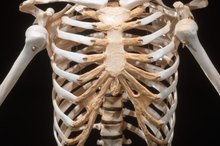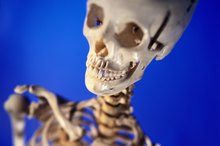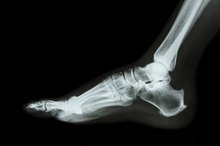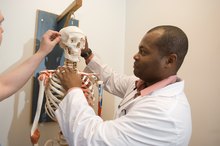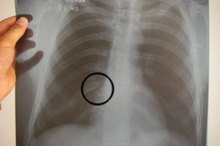Rib Bone Growth in Children
The ribs are a series of bones that protect the vital organs in the thorax such as the heart and lungs. Like all bones, the ribs begin to form in the developing embryo, but they continue to grow and develop throughout childhood. Some genetic and metabolic problems can lead to abnormal rib growth in children.
Flat Bones
Bones come in four main types: long, short, irregular and flat. The ribs and the skull are two of the most prominent flat bones. The normal human thorax contains 24 ribs, consisting of two sets of 12 ribs. The first seven ribs are known as the "true" ribs and are connected to the sternum via cartilage. Three of the "false" ribs also connect to the sternum but the other two have no connection to the sternum and are also known as "floating" ribs.
- Bones come in four main types: long, short, irregular and flat.
- The first seven ribs are known as the "true" ribs and are connected to the sternum via cartilage.
Intramembranous Ossification
Four Main Parts of a Skeletal System
Learn More
All bones begin as cartilage and eventually harden into bones via a process known as ossification. Flat bones such as the ribs are unusual in that they undergo intramembranous ossification. With this type of bone formation, sheets of connective tissue are laid down where the bones will be. Gradually the cells in the connective tissue are converted into osteoblasts, which then create the bone matrix.
- All bones begin as cartilage and eventually harden into bones via a process known as ossification.
- Flat bones such as the ribs are unusual in that they undergo intramembranous ossification.
Development
Children begin to develop ribs in utero. Ribs are formed from cells in the vertebrae. The ribs begin to appear at approximately 7 1/2 weeks of gestation and begin to flatten one week later. By birth, the ribs are fully formed, though additional replacement of cartilage continues throughout childhood.
- Children begin to develop ribs in utero.
Abnormalities
Specialized Cells in the Skeletal System
Learn More
Many conditions can negatively affect rib development in children 1. Genetic disorders such as trisomy 18, neurofibromatosis, achondroplasia, thalassemia major and mucopolysaccharidosis can cause the ribs to form abnormally. An overactive parathyroid gland and vitamin D deficiency, also known as rickets, can also cause problems with rub formation. Giving children prostaglandins, a type of medication used to treat heart disease, can also cause abnormal rib bone development, according to the website RadioGraphics.
- Many conditions can negatively affect rib development in children 1.
- An overactive parathyroid gland and vitamin D deficiency, also known as rickets, can also cause problems with rub formation.
Related Articles
References
- FetalUltrasound.com: Normal Rib Development
- Radiographics: Pediatric Ribs: A Spectrum of Abnormalities
- KidsHealth from Nemours. Your bones.
- U.S. National Library of Medicine. MedlinePlus. Bruised rib care. Updated June 2019.
- American Society of Regional Anesthesia and Pain Medicine. The Slipping Rib Syndrome: An Often-Overlooked Diagnosis. February 2019.
- Copeland G, MacHin D, Shennan J. Surgical treatment of the ‘slipping rib syndrome’. British Journal of Surgery. 1984;71(7):522-523. DOI:10.1002/bjs.1800710716
- Heinz G. Slipping Rib Syndrome. JAMA. 1977;237(8):794. DOI:10.1001/jama.1977.03270350054023
- Meuwly J, Wicky S, Schnyder P, Lepori D. Slipping Rib Syndrome. Journal of Ultrasound in Medicine. 2002;21(3):339-343. DOI:10.7863/jum.2002.21.3.339
- Rice University. 7.4 The Thoracic Cage – Anatomy and Physiology. Opentextbc.ca.
Writer Bio
Adam Cloe has been published in various scientific journals, including the "Journal of Biochemistry." He is currently a pathology resident at the University of Chicago. Cloe holds a Bachelor of Arts in biochemistry from Boston University, a M.D. from the University of Chicago and a Ph.D. in pathology from the University of Chicago.
